Dashi is the basic Japanese soup stock used in many Japanese dishes. Learn how to make Awase Dashi at home with umami-packed ingredients like kombu (dried kelp) and katsuobushi (dried bonito flakes).

When you decide to make Japanese food, you will realize that a lot of recipes require dashi, Japanese soup stock.
With this unfamiliar ingredient, you may think Japanese food is hard to replicate at home. On the contrary, dashi is actually the easiest soup stock anyone can make from scratch as it requires only 1-2 ingredients and 20-minute prep time. This post shows you how you can make Awase Dashi using a combination of ingredients. Once you learn the ins and outs of dashi making, you’ll be ready to tackle Japanese cooking with a breeze.
What is Dashi?
Dashi (だし, 出汁) is Japanese soup stock that builds the bases for many of your favorite Japanese dishes like miso soup, chawanmushi, ramen, and shabu shabu. It is the essence of authentic Japanese flavor, and it tells the dishes apart if other substitutions are being used in place of the soup stock. And what defines dashi is the use of carefully selected ingredients like kombu, bonito flakes, shiitake mushrooms, and anchovies, and each ingredient is uniquely Japanese.
In general, there are five different types of dashi (two are vegan). Scroll down to see 5 different types or check out my Ultimate Dashi Guide. When we say “dashi” in Japan, it usually implies Awase Dashi because it’s the most commonly used stock.
Awase Dashi (合わせだし) is made from a combination of kombu (dried kelp) and katsuobushi (dried bonito flakes), and it’s the seafood-based stock. *Awase (合わせ) means “to combine”, “mixed”, or “together.”
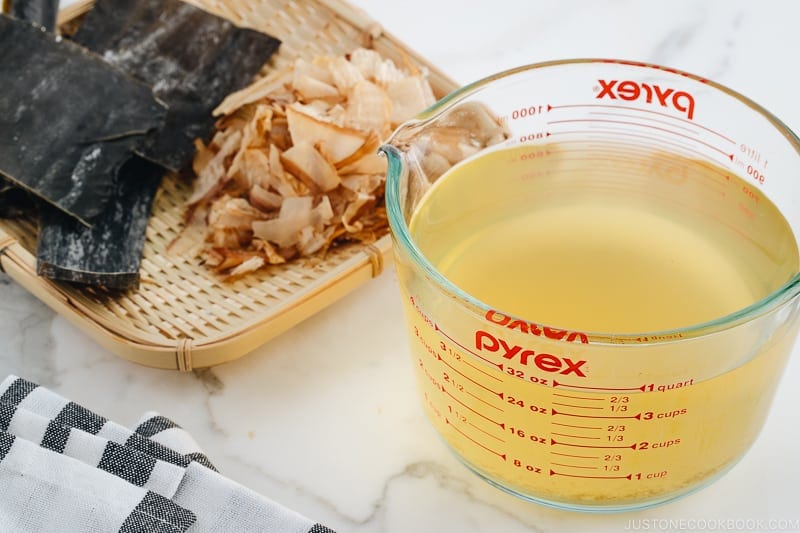
How to Make All-Purpose Basic Dashi
The First Dashi
The base of Awase Dashi is a vegan Kombu Dashi made from dried kelp. You can cold brew or hot brew kombu to make the dashi. Then you would add dried bonito flakes to the kombu dashi. This makes the stock more enriched. When you make dashi from the spent kombu and katsuobushi, it’s called Ichiban Dashi (一番だし). It’s basically the first pure dashi.
The Second Dashi
Niban Dashi (二番だし), or the second dashi is made from the spent kombu and katsuobushi, which you reserved from making Ichiban Dashi. Niban Dashi is a lighter, less intense dashi, yet still provides a great umami flavor despite the previously used ingredients.
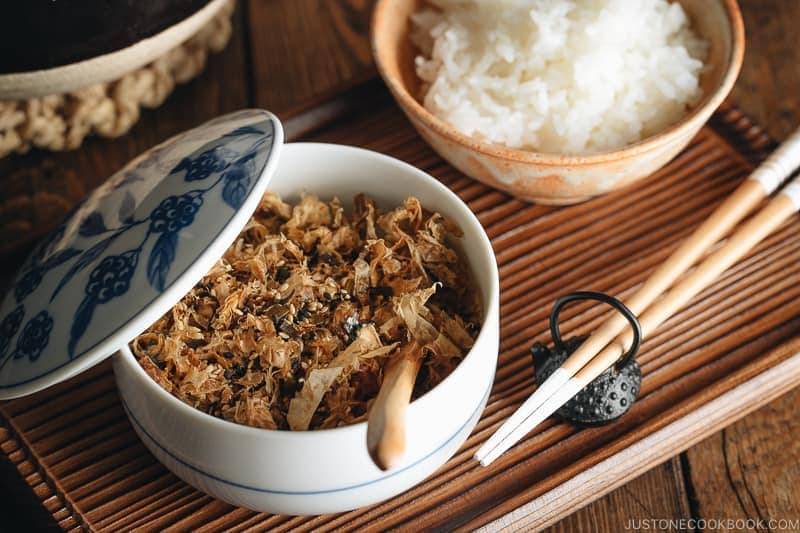
Do we really need to make dashi twice?
At a regular household, we make such a small amount of dashi that it’s not very efficient to make both Ichiban Dashi and Niban Dashi. My suggestion is to make very good Ichiban Dashi and utilize the used kombu and katsuobushi to make Homemade Furikake (rice seasoning) and Kombu Tsukudani (simmered kombu) after collecting enough used kombu and katsuobushi. This way, there will be no waste, and you get another side dish to accompany your meal.
So then who makes Niban Dashi? Japanese restaurants make a huge batch of dashi daily. They use Ichiban Dashi for dishes like Clear Soups (Osumashi おすまし) and Chawanmushi, which require the pure and maximum amount of umami from the dashi ingredients. They typically use Niban Dashi for simmered food (Nimono) and miso soup, which doesn’t require much flavor from the soup stock.
Dashi Shortcut
Sometimes life happens and you just don’t have 20 minutes to make dashi from scratch. On those occasions, you can use Dashi Packet or Dashi Powder.
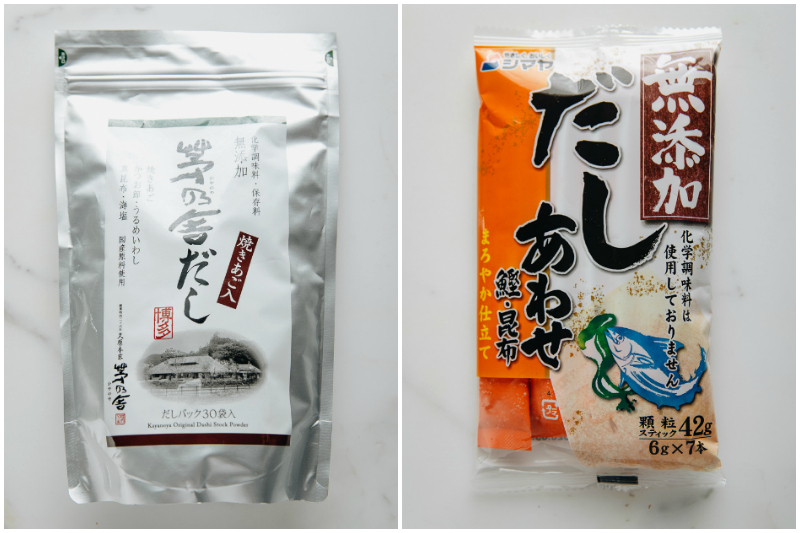
I love using Kayanoya Dashi Packet (left) and Shimaya Dashi Powder (right). Both are MSG-free and additive-free. You can purchase them at Japanese grocery stores or on Amazon:
- Kayanoya Dashi Packet
- Shimaya Dashi Powder
The instruction on how to use them (recipes) can be found in the Dashi Packet post and Dashi Powder post.
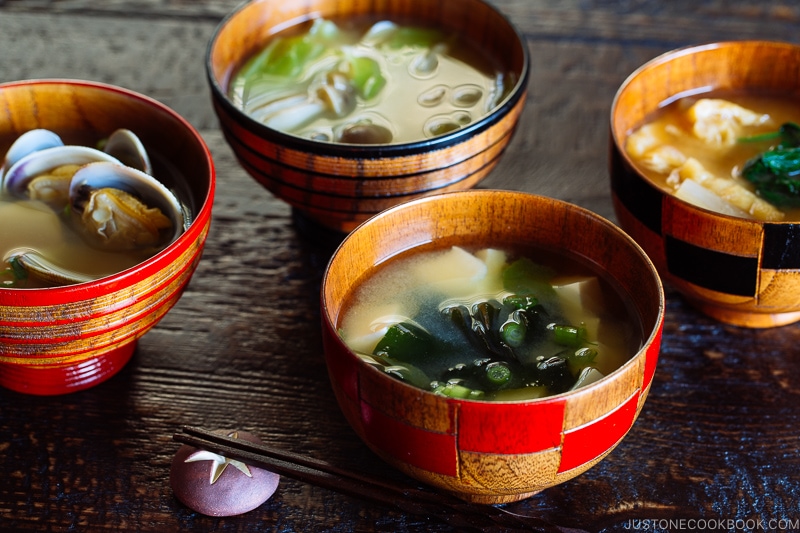
Easy & Delicious Recipes Using Dashi
- Homemade Miso Soup
- Spicy Shoyu Ramen
- Agedashi Tofu
- Japanese Hot Pots and Stews
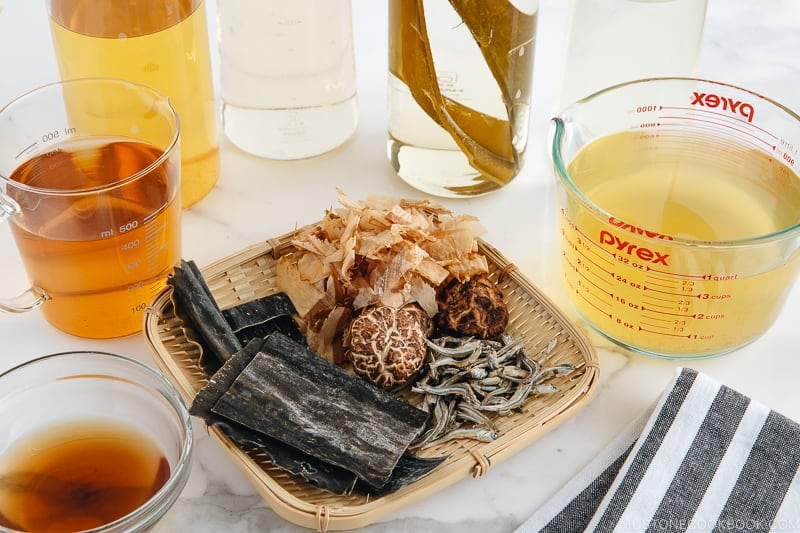
The Ultimate Dashi Guide
Dashi plays an important role as a flavor enhancer in Japanese cooking, so you don’t need to season the food with too much salt, fat, and sugar. Rich in minerals and other vitamins, dashi is considered a healthy ingredient in our daily diet.
Wish to learn more about Japanese cooking? Sign up for our free newsletter to receive cooking tips & recipe updates! And stay in touch with me on Facebook, Pinterest, YouTube, and Instagram.
Editor’s Note: This post was originally published in January 2013. The images and content have been updated in April 2019.



